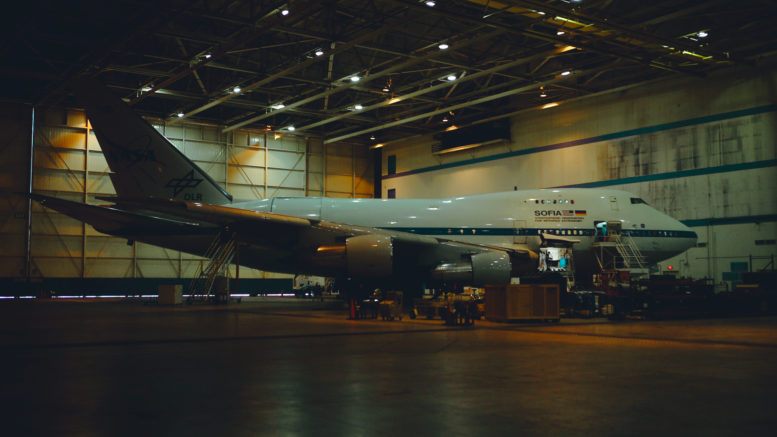The Neil A. Armstrong Flight Research Center, sometimes abbreviated as AFRC, is NASA’s premier installation for atmospheric flight research. The Research Center is chartered to research, develop, verify and transfer advanced aeronautics, space and related technologies, and conduct atmosphere Earth and space science flight operations.
NASA Armstrong is a tenant organization at Edwards Air Force Base and is located adjacent to Rogers Dry Lake, which at 44 square miles is the largest dry lakebed in the world. The center flies a variety of specialized research and support aircraft within a 20,700-square mile restricted airspace test range.
In addition to the main base at Edwards Air Force Base, there is a a second site in Palmdale, California, called Building 703, which houses and operates several of NASA’s Science Mission Directorate aircraft including SOFIA, which stands for the Stratospheric Observatory For Infrared Astronomy.
The center is named in honor of Neil A. Armstrong, a former research test pilot at the center and the first man to step on the moon during the historic Apollo 11 mission in 1969.
Origins Of Armstrong Flight Research Center
The history of NASA Armstrong began in late 1946 when 13 engineers and technicians from the NACA Langley Memorial Aeronautical Laboratory came to Muroc Flight Army Air Base in Southern California’s high desert to prepare for the first. supersonic research flights by the X-1 Rocket plane in a joint NACA, Army Air Forces and Bell Aircraft research program.
The Muroc Flight Army Air Base would later be renamed several times before becoming the Armstrong Flight Research Center, which includes name changes to the NACA High-Speed Flight Research Station, NACA High-Speed Flight Station, the NASA High-Speed Flight Station, the NASA Flight Research Center, and the Dryden Flight Research Center before being named the Armstrong Flight Research in 2014.
Notable Projects And Technical Achievements
The center is associated with many important technological milestones in aviation and space access in the specific areas of supersonic and hypersonic flight, digital fly-by-wire control systems, supercritical and forward-swept wings, and the space shuttles. Notable programs and aircraft to have been based out of and tested at the site includes:
- Lunar Landing Research Vehicles, which is an Apollo Project era program to build a simulator for the Moon landing.
- Linear Aerospike SR-71 Experiment, which is a study on the reusable launch vehicle design based on a linear aerospike rocket engine.
- Dream Chaser, which is a reusable lifting body spaceplane
- Controlled Impact Demonstration, which is a joint project to research a new jet fuel that would decrease the damage due to fire in the crash of a large airliner.
- Douglas Skyrocket, which is a successor to the Bell X-1.
- X-15 Rocket Plane
- Wingless lifting body tests during the 1960’s and the 1970’s
Current Status
In addition to research and support aircraft, the Armstrong Flight Center assets include a high-temperature and loads calibration laboratory; aircraft flight instrumentation capability; a flow visualization facility to study airflow patterns; a. data analysis facility to process flight research data; and remotely piloted unmanned aircraft flight research expertise. Armstrong’s Research Aircraft Integration Facility simultaneously checks aircraft controls, avionics, electronics and other systems and houses Armstrong’s flight research aircraft simulators. As this facility is the only facility of its type in NASA, the facility is designed to accelerate and enhance systems integration and preflight checks omg research. aircraft.
NASA Armstrong employs more than 1,150 government and contractor personnel at the Edwards Air Force Base and Palmdale, California locations. Astrmstrong continues to conduct research and provide support for NASA’s efforts in aeronautics technologies, human. spaceflight, space exploration, and Earth and space science.

I am extremely inspired with your writing talents and also with the layout on your blog. Is this a paid theme or did you modify it yourself? Either way stay up the excellent high quality writing, it is rare to see a nice blog like this one these days.